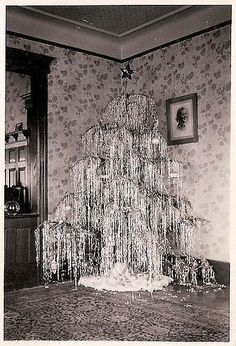
Did you know that tinsel used to be made of real silver? It’s true. It may not always look great on Christmas trees but it’s got an interesting history. Thanks to Motherboard for this:
Tinsel was popular in this form for centuries, with a slight break in manufacturing during World War I because of disruptions to the manufacturing chain. But it didn’t last. Lead, as you may recall, has toxic effects on the human body, from our nervous systems to our gastrointestinal tracts.
These effects had been known for a long time, but the US didn’t start enforcing regulations on how much lead could be in commercial products until the 1970s (lead-based paint was the first to be banned in 1971). In 1972 the US Food and Drug Administration announced that tinsel made of lead could no longer be sold to consumers.
These days, the tinsel you know (and are kind of annoyed with) is made of a synthetic compound called polyvinylchloride, or PVC, with a shiny finish. It’s cheap and durable, used in products ranging from thick housing pipes to records and fake leather clothes. Some less-flexible types of PVC are recyclable, but those handfuls of sparkly plastic that you throw willy-nilly at your tree are not. Much like the Christmas spirit, tinsel never dies; instead it sits at the bottom of a landfill with the rest of your holiday glee.
